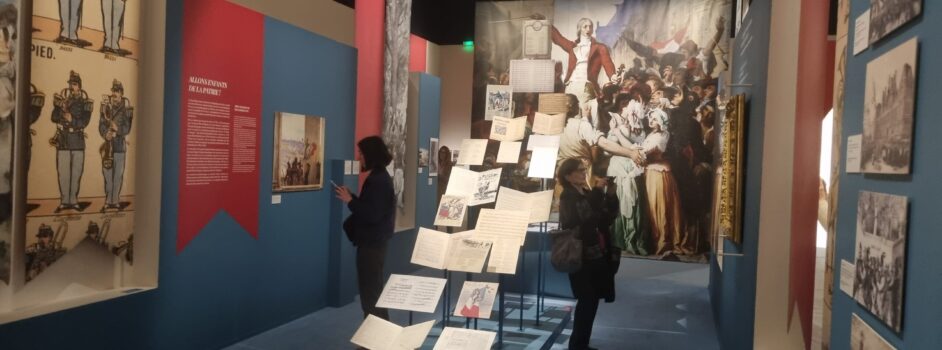Plus de détails
Aix-en-Provence, Théâtre du Jeu de paume. 15-VII-2013. Francesco Cavalli (1602-1676) : Elena, Dramma per musica en un prologue et trois actes sur un livret de Giovanni Faustini. Mise en scène : Jean-Yves Ruf ; décors : Laure Pichat ; costumes : Claudia Jenatsch ; lumières : Christian Dubet. Avec : Emöke Baráth, Elena / Venera ; Valer Barna-Sabadus, Menelao ; Fernando Guimarães, Teseo / Cacciatore ; Solenn’ Lavanant Linke, Ippolita / Pallade ; Rodrigo Ferreira, Peritoo ; Emiliano Gonzalez Toro, Iro ; Anna Reinhold, Menestao / La Pace ; Scott Conner, Tindaro / Nettuno / Cacciatore / Schiavo ; Mariana Flores, Astianassa / Giunone / Castore / Diva ; Majdouline Zerari, Eurite / La Verita ; Brendan Tuohy, Diomede / Creonte / Schiavo ; Christopher Lowrey, Euripilo / La Discordia / Polluce / Cacciatore / Divo ; Job Tomé, Antiloco / Cacciatore / Schiavo/ Divo. Cappella Mediterranea, direction et réalisation : Leonardo García Alarcón
At last! After a remarkable – albeit not very lyrical – premiere (The House Taken Over), a poor Rigoletto, a Don Giovanni with a dubious cast, the Aix festival eventually rose to the level it should always reach. Lifted by a young and talented cast, inventive staging, and exceptional musical conducting, the Elena by Francesco Cavalli was the welcome surprise of the 2013 festival.
In the direct line of Venetian opera—of which there only survive today Il Ritorno d'Ulisse en Patria and L'Iconoronazione di Poppea by Monteverdi, and La Calisto, also by Cavalli—Elena mixes tragedy and comedy, realism and stylization, and plays with the art of disguise. Here we do not deal with Helen of Troy but with the origin of the myth, which is much less well known— and obviously transformed. Daughter of Tyndareus (but actually of Zeus) and Leda, Helen is a young girl, the prettiest in the world, but she prefers the games of the stadium to those of love. Menelaus enters officially into Helen's service by dressing up as an Amazon—and charms all the men in the realm. His rival in love, Theseus, kidnaps the princess and her (fake) companion. From this follows a series of tit-for-tats, each one funnier than the last, along with interventions by several gods, hunters, Argonauts, slaves, fools, and of course, Hyppolita, Theseus's wife, an Amazon betrayed. All's well that ends well, and Helen leaves with Menelaus. What happens next is another story.
Jean-Yves Ruf's efficient staging aims for simplicity, with an arc-shaped moveable set piece, hangings, a few props, and nothing more. All the rest is in the characters' gestures and attitudes. The numerous scenes follow one after the other without pause, and the singers, so directed, turn out to be excellent actors. For the sake of realism, the action is distanced by means of extravagant wigs, costumes that mix various time periods, and comical stage business, always simple and nicely chosen. On top of all this, there is the subtle handling of the lighting by Christian Dubet. The staging reveals a rare intelligence, without any pretention or pomposity; it is a real work of theater, close to the original libretto—a principle we wish we could see applied to opera more

Fernando Guimaraes (Teseo), Scott Conner (Nettuno), Rodrigo Ferreira (Peritoo) © Patrick Berger / Artcomart
As always with works of this period, the conductor has to take upon himself the instrumental realization, here a success for Leonardo García Alarcón, who resurrected the score with panache, thanks to the Venetian Center for Baroque Music. The instrumentation offered is rich, diverse, and brilliant: it leads us far beyond the usual dull and monotonous continuo. Not to be forgotten for their contribution to the conductor's success are the musicians of the Capella Mediterranea. Garcia Alarcon continues along the lines laid down by the conductor he formerly assisted, Gabriel Garrido: his realizations—in instrumental as well as rhythmical terms—are exuberant, and he has a stronger conducting technique than Garrido's. After the discovery of Falvetti's Diluvio Univerale and this Elena, we cannot wait for what comes next: Nabucco, also by Falvetti.
And last but not least, the casting: the 2013 revelation of the International Classical Music Awards, Valer Barna-Sabadus dominated the stage as a disguised Menelaus, alongside Emöke Baráth, stellar in the part of Helen. Fernando Guimarães, Rodrigo Ferreira, Scott Conner, and Solenn' Lavanant-Linke all confirm bright prospects for their professional futures. All of the numerous supporting roles are undertaken with professionalism. Finally, the “young doyen” of the troupe, Emiliano Gonzalez Toro, had the necessary vis comica to play the fool without compromising his vocal perfection.
Leonardo García Alarc
Plus de détails
Aix-en-Provence, Théâtre du Jeu de paume. 15-VII-2013. Francesco Cavalli (1602-1676) : Elena, Dramma per musica en un prologue et trois actes sur un livret de Giovanni Faustini. Mise en scène : Jean-Yves Ruf ; décors : Laure Pichat ; costumes : Claudia Jenatsch ; lumières : Christian Dubet. Avec : Emöke Baráth, Elena / Venera ; Valer Barna-Sabadus, Menelao ; Fernando Guimarães, Teseo / Cacciatore ; Solenn’ Lavanant Linke, Ippolita / Pallade ; Rodrigo Ferreira, Peritoo ; Emiliano Gonzalez Toro, Iro ; Anna Reinhold, Menestao / La Pace ; Scott Conner, Tindaro / Nettuno / Cacciatore / Schiavo ; Mariana Flores, Astianassa / Giunone / Castore / Diva ; Majdouline Zerari, Eurite / La Verita ; Brendan Tuohy, Diomede / Creonte / Schiavo ; Christopher Lowrey, Euripilo / La Discordia / Polluce / Cacciatore / Divo ; Job Tomé, Antiloco / Cacciatore / Schiavo/ Divo. Cappella Mediterranea, direction et réalisation : Leonardo García Alarcón








